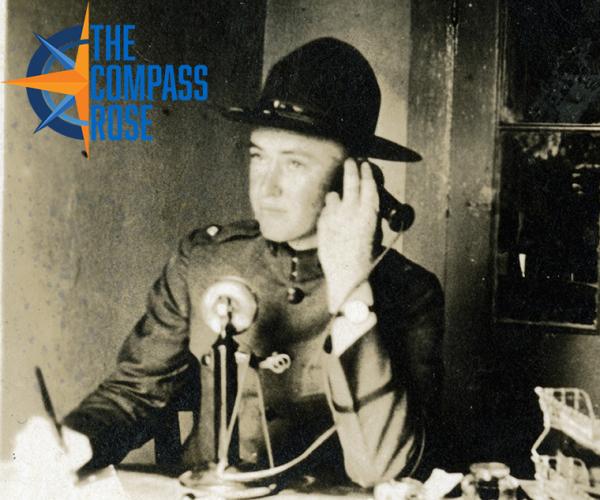
Today in History: The First Transatlantic Phone Call
The purpose of The Compass Rose is to raise awareness of Special Collections' resources and to foster the use of these resources. The blog series also reports significant new programs, initiatives, and acquisitions of Special Collections.
Smartphones today bear little physical resemblance to the first telephones developed in the 1860's, but the ultimate goal of this technology remains the same: to give people the opportunity to instantly communicate with others regardless of physical distance. In this blog post, we'll some interesting pictures from our collections and learn about the first transatlantic phone call!
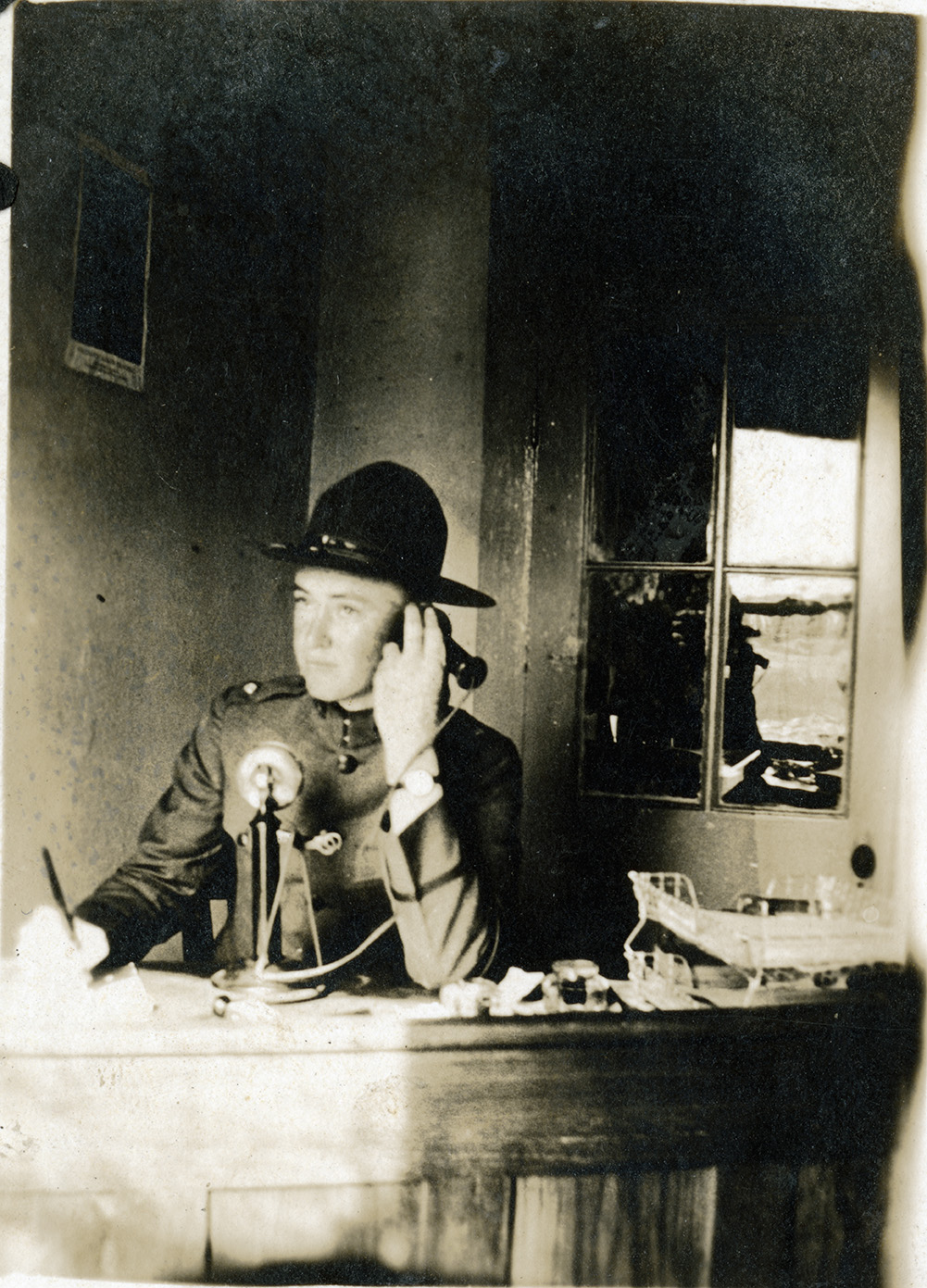
James M. Terrill on a telephone at a desk, Grubbs Vocational College, approximately 1910s
Long-distance communication before the invention of the telephone was conducted via letters, early forms of fax machines, and telegraphs. The telephone was developed by businessmen and inventors over several years, and controversy abounds as to who can be called the definitive inventor of the telephone. Charles Grafton Page discovered a way to use electricity passing through wire to make sound in 1840. Antonio Meucci is believed to have created an early telephone in the 1850's. The greatest controversy regarding the invention of the telephone is between Alexander Graham Bell and Elisha Gray, with accusations of theft of Gray's ideas by Bell and debate that continues to this day over whether the two independently invented the telephone. Alexander Graham Bell's name ultimately became most associated with the development of the telephone.
The first official transatlantic phone call took place 94 years ago, on January 7, 1927. The call was held between the President of America's AT&T company, Walter S. Gifford, and the head of the British General Post Office, Sir Evelyn P. Murray. The call was not transmitted by wire, but by radio waves. Gifford, who was in New York City, and Gifford, who was in London, shared prepared statements on the significance of this technology with regards to fostering better understanding and facilitating business. This call was recorded and is available through the Library of Congress and can be heard online. Following the call, the line was open to personal and business-related calls. By the end of the day, over $6 million worth of business transactions had been conducted between the two cities, and a news dispatch had been sent from Europe to America.
This call had been preceded by a test call on January 6, 1927. The unscripted call, which was also recorded, included this almost prophetic quote: "Distance doesn't mean anything anymore. We are on the verge of a very high-speed world..."
International telephone service would later be used to rapidly conduct business, connect international governments, and in the case of Emma Elizabeth Weatherly and Lieutenant Dwight L. Baker, made it possible to conduct a transatlantic wedding! The two were married in June, 1946. The ceremony was largely conducted at the Fort Worth home of Lt. Baker. Emma Weatherly wore a floral dress while her future father-in-law Reverend W. D. Baker conducted the ceremony and Lt. Baker's brother, Bill, read the benediction. The groom was in Frankfurt, Germany, for the ceremony, and a photograph of himself stood in his stead.

Emma Elizabeth Weatherly, married Lieutenant Dwight L. Baker, in a telephone wedding from Fort Worth, Texas to Frankfurt, Germany.
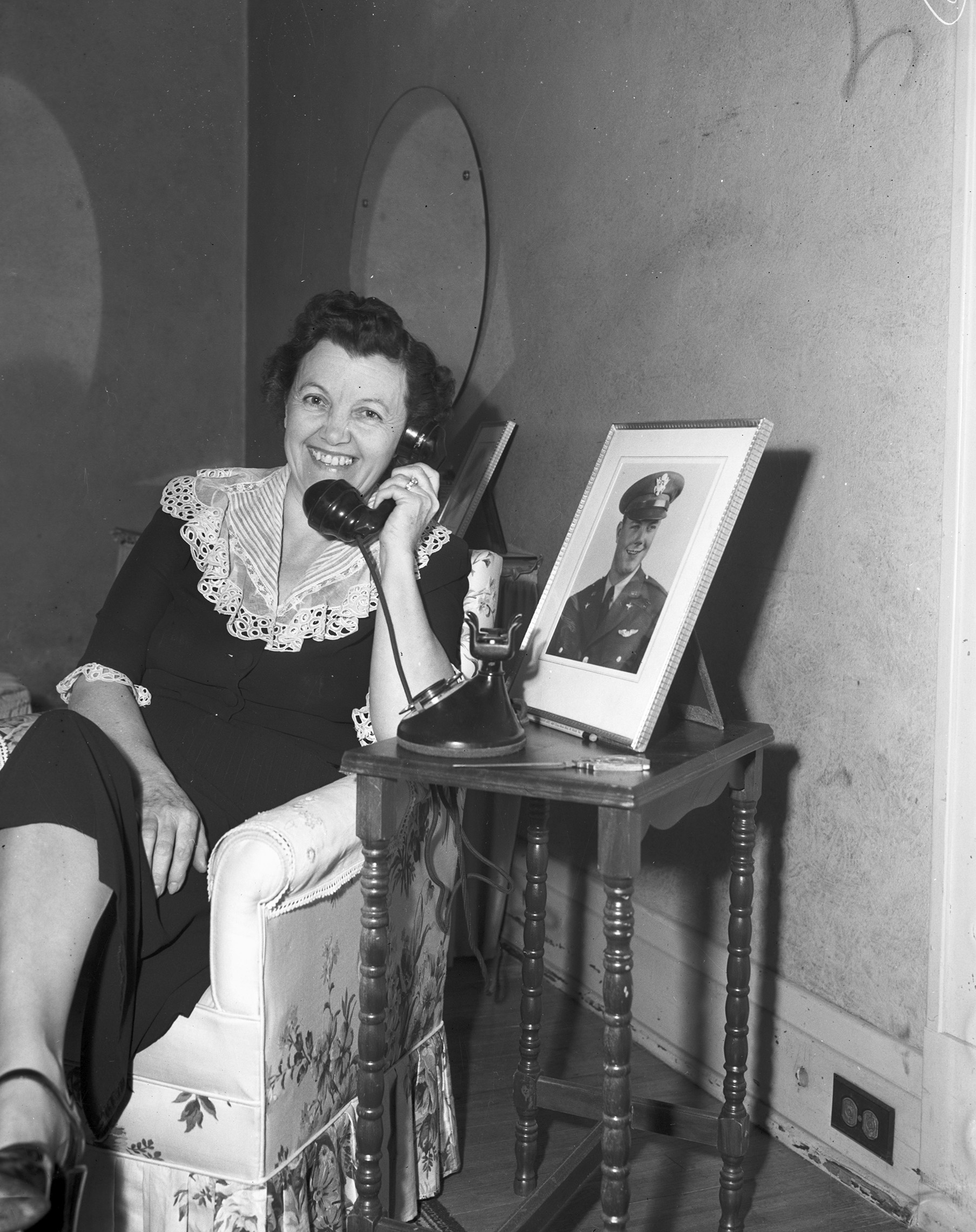
Mrs. Phil Russell, 1837 Hill Crest, Fort Worth, Texas, learning that her son, 2nd Lieutenant Roy D. Russell, was one of the American prisoners of war rescued in the Philippines. October, 1944.
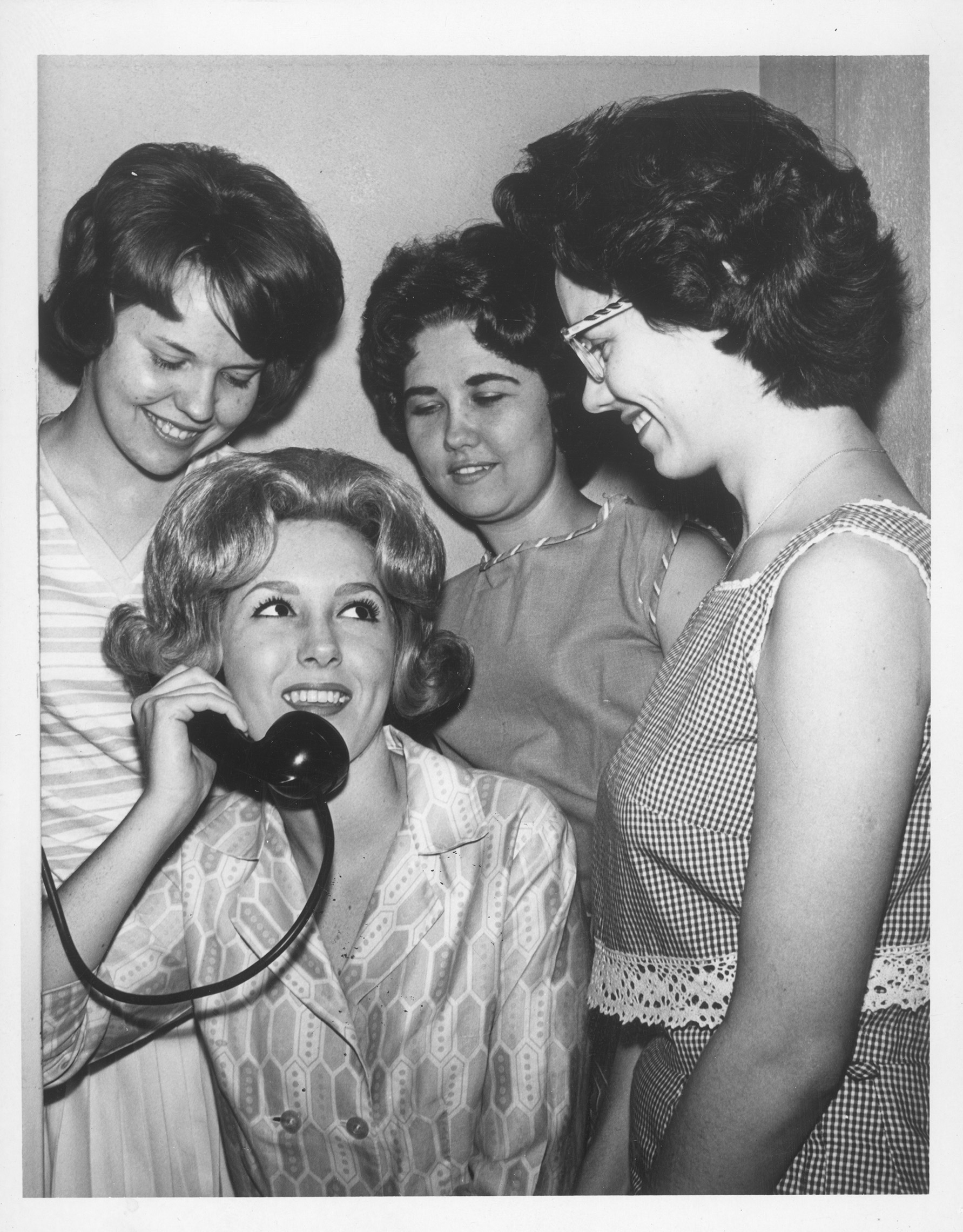
Arlington State College students with telephone, approximately 1950's or 1960's
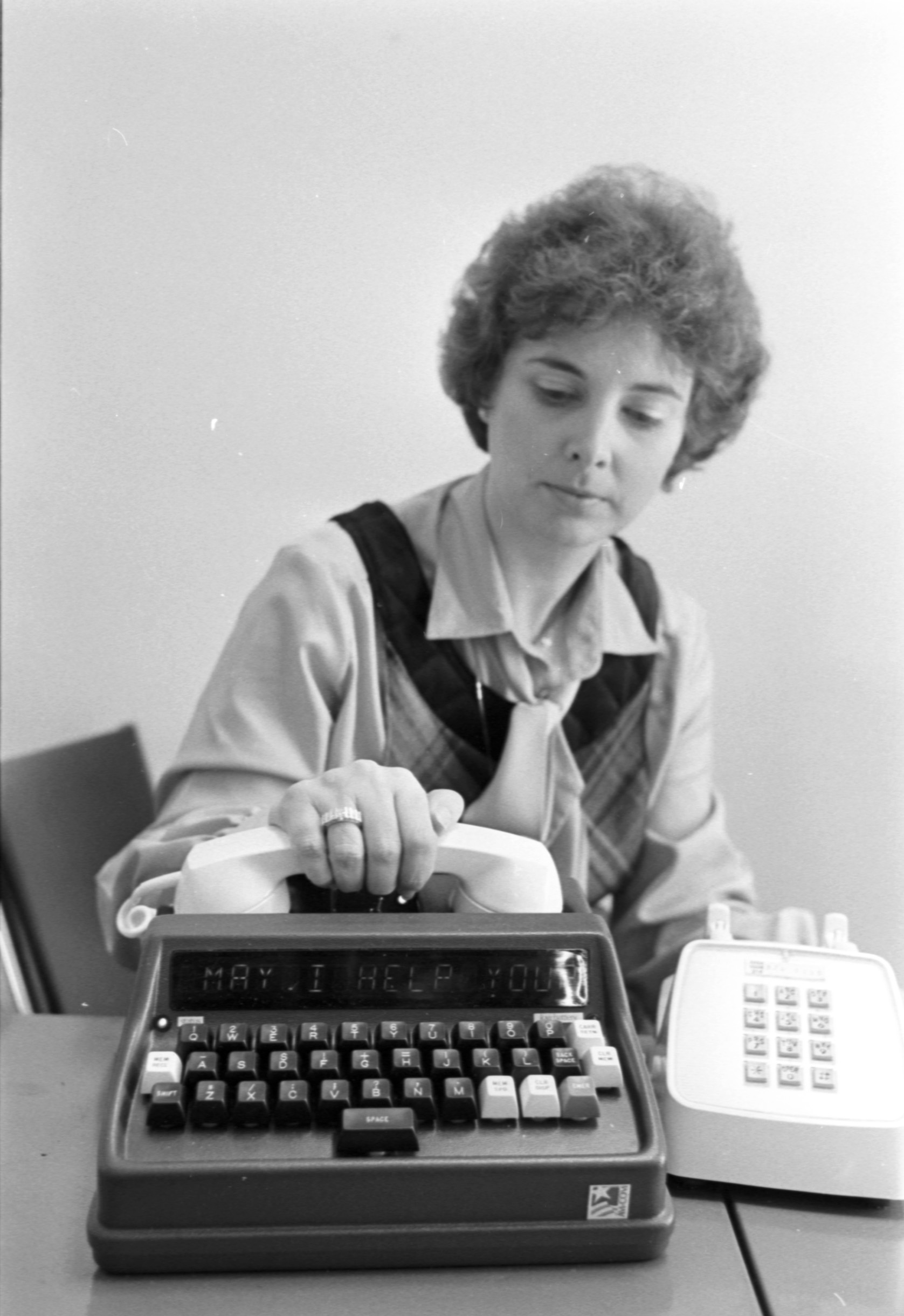
Special telephone for the Deaf and Hard of Hearing at the Dallas-Fort Worth Airport's Community Services office. February, 1981.
Telephones have advanced from machines dedicated to holding one-on-one conversations to smartphones that can rapidly communicate with thousands, if not millions, of people across the world. We can now use our phones to send a group message to friends and family abroad, share pictures on our social media, and even read articles about materials from the Special Collections! From the telephone booth to the pocket, telephones have served to make our world more connected and makes information easier to find and share.
What are some memories that you have made over the phone?

Comments
TAT call link bad
Corrected link for first TAT phone call audio recording
https://www.history.com/speeches/first-transatlantic-telephone-call
Add new comment